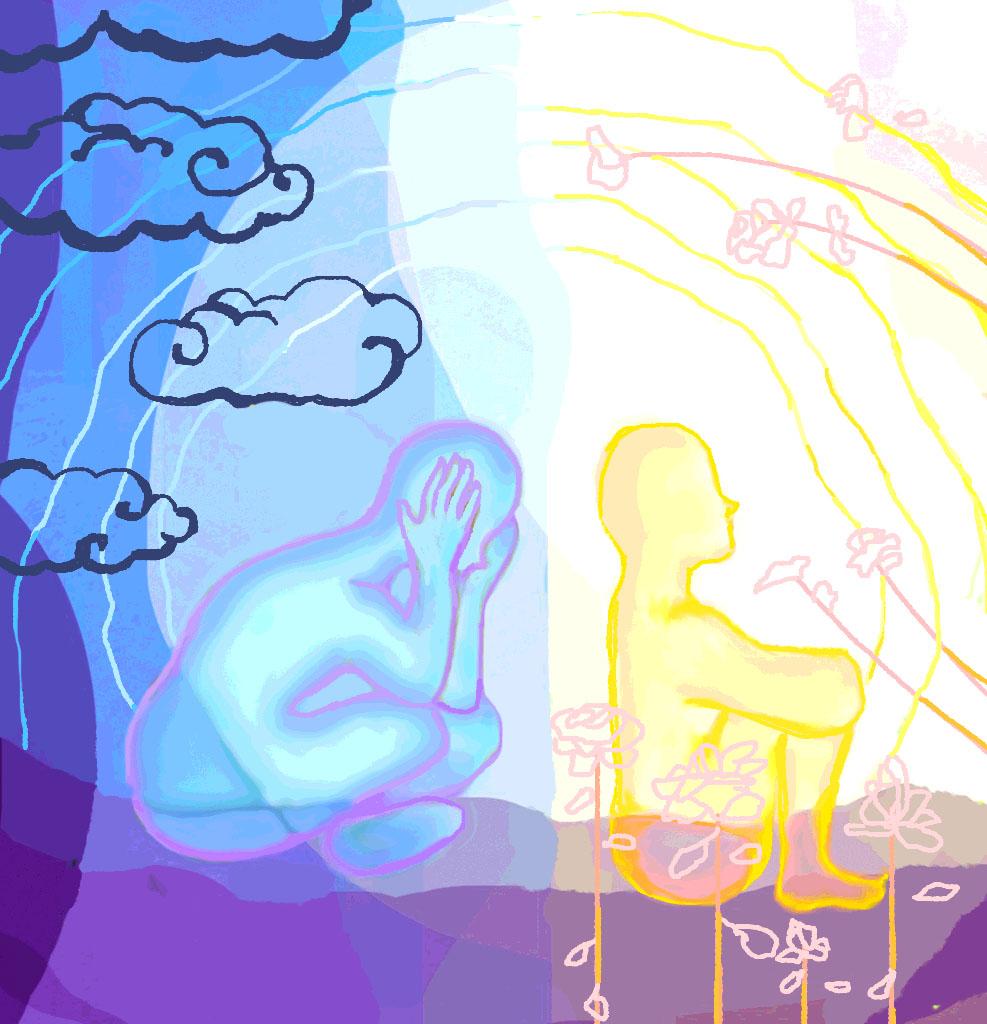
Art by Mary Palumbo
Transparency Item: The Perspectives section of the Graphic is comprised of articles based on opinion. This is the opinion and perspective of the writer.
Students often view summer break with a breath of relief — the full weight of school lifts, and there is more room to relax. However, after a while, they quickly find themselves bored and scramble for various activities to fill their time.
Most people hate being bored. There is nothing stimulating or enticing about sitting alone with one’s thoughts. When I find myself in a moment of quiet, I tend to become restless and search for anything to keep busy, such as doing chores.
Psychology professor Timothy D. Wilson conducted an experiment at the University of Virginia to explore the state of being alone with one’s thoughts.
In the experiment, 42 participants sat quietly doing nothing for 15 minutes. By the end of the time period, nearly half of the participants had administered at least one self-inflicted shock. Prior to those 15 minutes, the same participants had declared they would pay money not to experience the painful shock, according to BBC.
The experience of sitting alone was so unpleasant that people would rather experience pain than be left to their thoughts. Evidently, there is something undesirable about stewing in these emotions.
Especially in this day and age with social media, it feels normal to constantly be on the move. If schoolwork is finished, there is always something else productive to do. If there is a break, the go-to is scrolling on a phone.
People are always keeping their minds busy; it’s no wonder that they often feel drained despite taking time away from their work. However, the obvious unhealthy habits of social media in our daily lives may not be the only thing leaving us exhausted.
I experienced this myself, especially this summer. Arriving back home was wonderful, yet uneasiness continued to stew within me. Aside from work obligations, I filled my days with customary activities, including physical exercise, personal work projects, hobbies and hanging out with friends.
It was a profound improvement from the unhealthy coping mechanisms I employed in years prior. But the terrible, empty feeling still remained, and I did not know why.
The truth was, I made good progress, and that was something to be proud of. But I also realized that I utilized these improved activities to continue avoiding uncomfortable feelings.
“While the need to be busy all the time can help keep our minds off things, it can also increase our stress, anxiety, and mental strain,” according to CalmSage.
At a breaking point, my partner encouraged me to practice mindfulness through meditation, a concept I had often scoffed at.
But it turned out mindfulness was not all about sitting upright on yoga mats and trying to shut off one’s thoughts.
Mindfulness meditation isn’t about stopping those thoughts but rather learning how to relate differently to them and think with a clear, calm, loving attitude, according to Ten Percent Happier.
It can be scary at first, allowing daunting emotions to run their course, but opening up to receive and kindly acknowledge them can make a world of difference. I discovered a few points that have helped my own mindfulness practice.
1. Emotions are impermanent
This concept stems from the Buddhist perspective on life and how things are constantly changing, according to PositivePsychology.com. The heavy feelings might feel terrible, but they don’t last forever.
2. Try to take on a more calm and neutral attitude
Become more observant of the physical and emotional feelings that dwell or pass. Mindfulness tunes into the senses to ground a person in the present moment.
3. Identification is key
Identifying where you feel discomfort in your body and accepting the discomfort — that is, refraining from changing or making the feeling go away — are key steps to sitting with your thoughts, according to The Center for Mindfulness & CBT.
There is no right or wrong way to practice mindfulness. A variety of methods exist and may be used however one feels comfortable.
For example, the body scan is a popular mindfulness practice and focuses on how each part of the body feels, starting from the feet up, according to PositivePsychology.com.
4. Stay Consistent
It surprised me how taking 10 minutes out of my day to sit quietly with myself turned out to be extremely healing. Not only did it mentally prepare and calm my mind for the day but I also learned a lot about myself when I sat through difficult emotions.
Up until that point, I realized I didn’t have much mental or physical awareness about myself. I was conditioned to just push past anything that hindered my work or leave it to God without practically doing anything for myself.
This restless lifestyle is especially easy to fall back into as the new school year approaches. While it’s tempting to fill the days with constant activities, it is equally important to allot time to rest. Your mind and body deserve it.
_________________
Follow the Graphic on Twitter: @PeppGraphic
Email Faith Oh: faith.oh@pepperdine.edu

